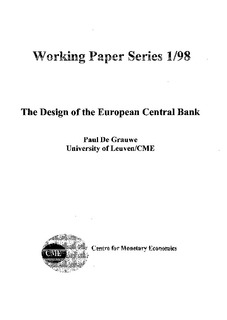| dc.contributor.author | De Grauwe, Paul | |
| dc.date.accessioned | 2011-10-28T11:49:43Z | |
| dc.date.available | 2011-10-28T11:49:43Z | |
| dc.date.issued | 1998 | |
| dc.identifier.issn | 1503-3031 | |
| dc.identifier.uri | http://hdl.handle.net/11250/95291 | |
| dc.description.abstract | In this article we analyse issues relating to the design of the future European Central Bank. This design is very much influenced by the differences in incentives to join EMU by its prospective members. We. therefore, start by highlighting these differences using the well-known Barro-Gordon model. We then analyse further issues relating to political independence and accountability of central banks. | no_NO |
| dc.language.iso | nob | no_NO |
| dc.publisher | Handelshøyskolen BI, Centre for Monetary Economics (CME) | no_NO |
| dc.relation.ispartofseries | CME Working paper series;1/1998 | |
| dc.title | The Design of the European Central Bank | no_NO |
| dc.type | Working paper | no_NO |
| dc.source.pagenumber | 24 s. | no_NO |
